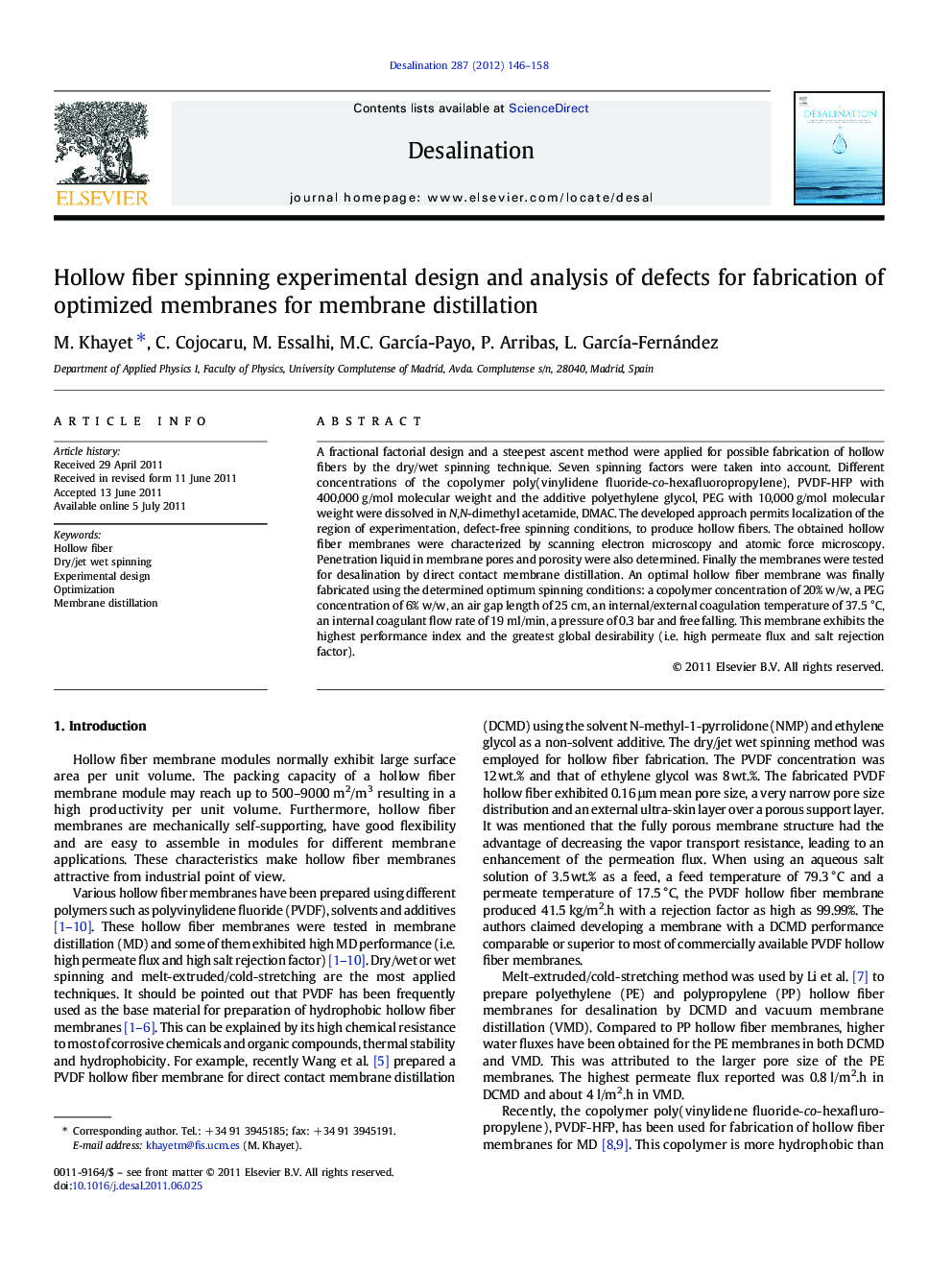| Article ID | Journal | Published Year | Pages | File Type |
|---|---|---|---|---|
| 624458 | Desalination | 2012 | 13 Pages |
A fractional factorial design and a steepest ascent method were applied for possible fabrication of hollow fibers by the dry/wet spinning technique. Seven spinning factors were taken into account. Different concentrations of the copolymer poly(vinylidene fluoride-co-hexafluoropropylene), PVDF-HFP with 400,000 g/mol molecular weight and the additive polyethylene glycol, PEG with 10,000 g/mol molecular weight were dissolved in N,N-dimethyl acetamide, DMAC. The developed approach permits localization of the region of experimentation, defect-free spinning conditions, to produce hollow fibers. The obtained hollow fiber membranes were characterized by scanning electron microscopy and atomic force microscopy. Penetration liquid in membrane pores and porosity were also determined. Finally the membranes were tested for desalination by direct contact membrane distillation. An optimal hollow fiber membrane was finally fabricated using the determined optimum spinning conditions: a copolymer concentration of 20% w/w, a PEG concentration of 6% w/w, an air gap length of 25 cm, an internal/external coagulation temperature of 37.5 °C, an internal coagulant flow rate of 19 ml/min, a pressure of 0.3 bar and free falling. This membrane exhibits the highest performance index and the greatest global desirability (i.e. high permeate flux and salt rejection factor).
Graphical abstractFigure optionsDownload full-size imageDownload as PowerPoint slideResearch highlights► Application of fractional factorial design and Box–Wilson steepest ascent method for hollow fiber spinning with seven factors. ► Fabrication of porous hydrophobic copolymer hollow fiber membranes by dry/jet wet spinning method for membrane distillation. ► Optimization of spinning process for fabrication of hollow fiber membranes. ► Characterization of spun hollow fibers by different techniques, SEM, AFM, liquid entry pressure and desalination by DCMD. ► The optimal spinning conditions were confirmed experimentally.
